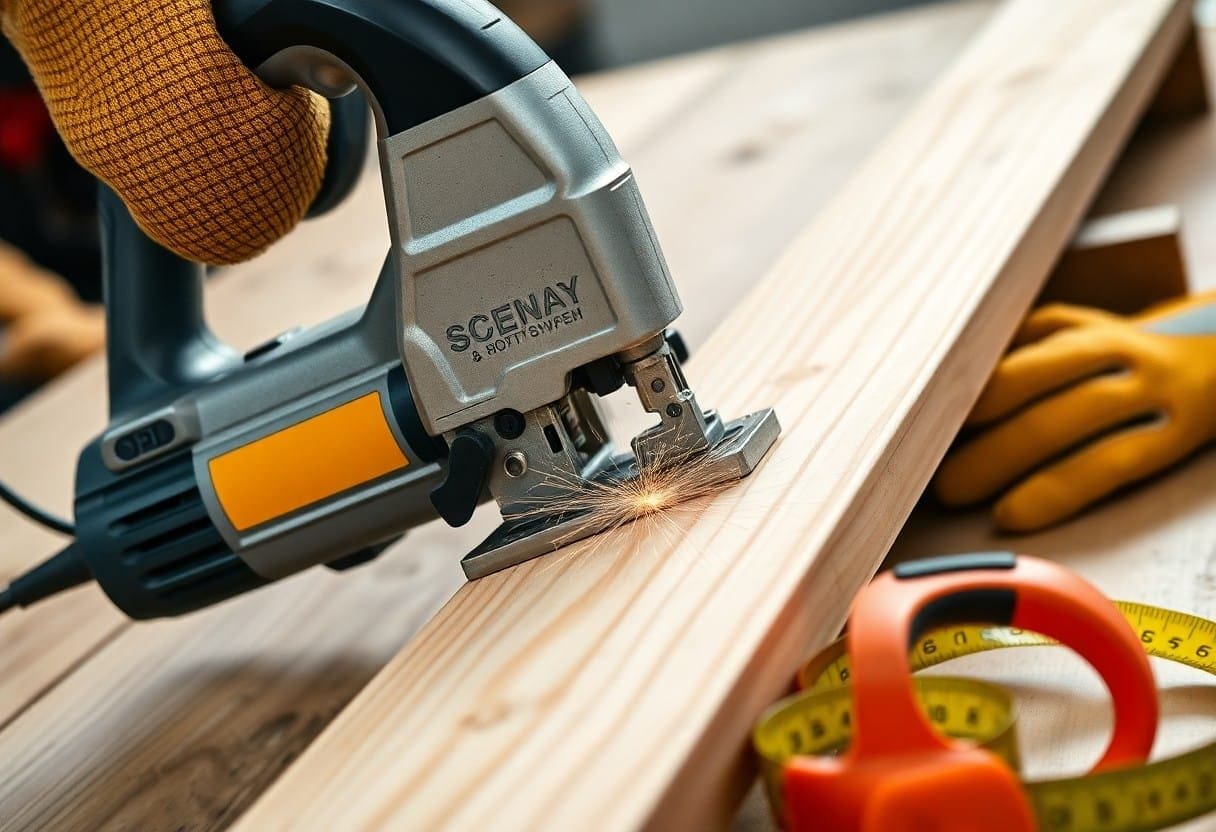Most jigsaws are versatile tools that can help you make precise cuts in various materials, but achieving straight cuts requires some skill and technique. By following certain steps and techniques, you can enhance your ability to create straight cuts with a jigsaw. Here’s how to do it effectively.
First and foremost, select the right jigsaw blade for the material you’ll be cutting. Different materials require different types of blades. For instance, use a fine-toothed blade for cutting wood and a special blade for metal. The right blade ensures a cleaner cut and minimizes the chance of splintering.
The next step involves preparing your workspace. Set your material on a stable and flat surface to avoid any movement during your cut. If you’re working with larger sheets of plywood or similar materials, it may help to use clamps to secure the material in place. This added stability helps you maintain control over the jigsaw while cutting.
Now, it’s time to mark your cutting line. Use a straightedge, such as a ruler or a level, to draw a precise line where you want to cut. Using a pencil will allow you to make clear, visible markings. For even greater accuracy, you can apply painter’s tape over the line prior to cutting. This helps to reduce splintering on the edges of your cut.
Before making your cut, adjust your jigsaw settings. Ensure that the speed is set appropriately for the material you’re cutting. A slower speed works well for thicker materials, while a faster speed can be applied for thinner materials. Additionally, consider adjusting the orbital setting of your jigsaw. This setting affects the blade’s movement; less orbital action can yield straighter cuts.
When you are ready to cut, start the jigsaw without applying pressure. Let the blade reach full speed before making contact with the material. Once it is engaged with the material, maintain a steady and consistent pressure on the tool, following the line you’ve marked. Make sure to guide the jigsaw along the line gently without pushing it too hard, as this can lead to uneven cuts.
For longer cuts, it may be beneficial to employ a guide. You can create a temporary guide by clamping a straight piece of wood along the cutting line. This acts as a fence for the jigsaw, ensuring that you keep the blade aligned with the cut. Alternatively, if you have a jigsaw with a base that can bevel, you can adjust it to align with your guide for increased accuracy.
Finally, as you reach the end of your cut, reduce your speed slightly. This helps avoid chipping at the cut’s endpoint. Once your cut is complete, turn off the jigsaw and wait for the blade to stop before lifting it away from the material.
By applying these tips and techniques, you’ll be well equipped to create straight cuts with your jigsaw. Practice makes perfect, so keep fine-tuning your approach to achieve the results you desire. Happy cutting!




